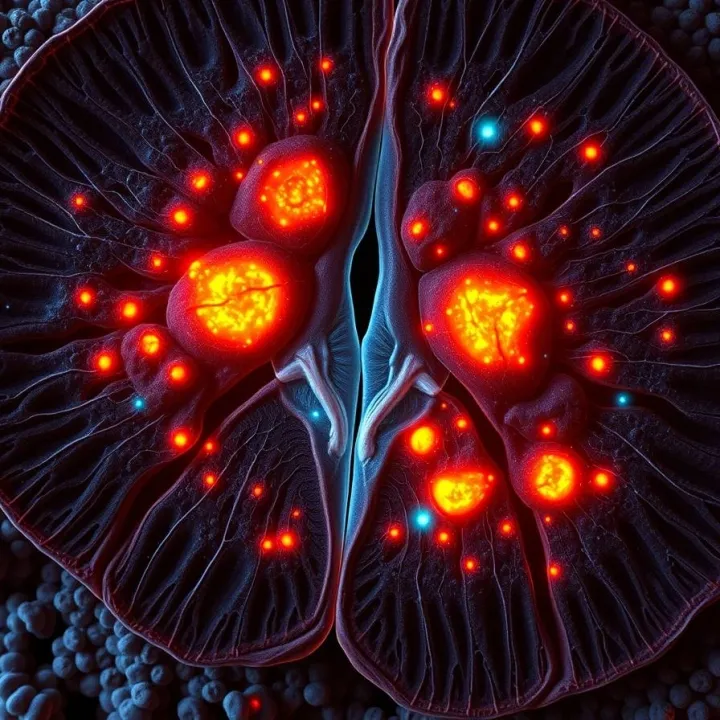Genome-wide association studies (GWAS) have revealed thousands of genetic variants linked to human traits and diseases, but many of these variants sit in portions of DNA that do not directly code for proteins. Their effects often depend on the specific cell types and tissues where they activate. Until recently, however, researchers had little ability to pinpoint where in the body these variants exert their influence. The new Spatial GWAS Atlas bridges this gap by pairing genetic association signals with spatial transcriptomics, a field that measures gene expression while preserving the physical coordinates of cells within intact tissue architecture.
The team collected and curated 3,854 GWAS datasets covering a wide range of traits, diseases, and physiological characteristics. These included studies on metabolic disorders, neurological diseases, immune function, psychiatric traits, and many other complex conditions. They then integrated these datasets with 635 spatial transcriptomics datasets spanning multiple species and tissue types, from human tumors to mouse organs to plant samples. Unlike conventional transcriptomics, which analyzes dissociated cells, spatial methods map gene activity directly onto tissue slices, revealing patterns that depend on local structure, cell neighborhoods, and microenvironments.
By combining these two sources of information, the Spatial GWAS Atlas identifies what the authors describe as "trait - region" and "trait - spot" associations. A trait - region association refers to a genetic link that appears concentrated within a specific anatomical structure - for example, a cardiovascular risk variant that aligns with the smooth muscle layer of a blood vessel. A trait - spot association drills down further, highlighting individual spatial coordinates within the tissue where genetic signals and local gene expression converge. This approach allows researchers to localize disease-relevant biology with unprecedented resolution.
The resource includes an interactive interface that supports keyword-based exploration, multi-criteria filtering, interactive maps, and bulk downloads. Users can search for a disease or trait, then visualize where in the tissue architecture its associated genes are activated. The system displays relevant cell types, spatial gradients, and functional clusters, creating a detailed picture of how genetic risk manifests in structural and molecular terms. Because spatial transcriptomics datasets can vary widely - different platforms, species, resolutions, and annotation standards - the team harmonized the data to create consistent spatial and genetic mappings.
One example highlighted by the authors involves neurological traits. Traditional GWAS might identify gene variants associated with cognitive performance or psychiatric conditions, but spatial mapping reveals exactly which neuronal layers, glial populations, or microcircuits show enriched genetic activity. This level of detail supports more mechanistic interpretations of genetic risk, pointing researchers toward specific cell niches that may contribute to disorders such as schizophrenia, Alzheimer's disease, or autism. Similar insights apply to cancer biology: the atlas can show whether risk variants align with tumor cores, surrounding stromal cells, immune-infiltrated regions, or boundary zones where tumors interact with healthy tissue.
Spatial GWAS can also illuminate how traits emerge through interactions between cell types. Many diseases arise not from a single cell population but from relationships between multiple compartments - immune cells communicating with epithelium, neurons coordinating with glia, or fibroblasts influencing tumor cells. Conventional GWAS and standard transcriptomic analyses often flatten these relationships, but spatial approaches restore the physical context. The atlas provides a way to ask whether genetic variants preferentially act in interface zones, gradients, or particular microenvironments.
The authors emphasize that the database supports both broad discovery and focused hypothesis testing. Scientists studying a specific disorder can search for the condition and immediately view spatial hotspots across available tissue datasets. Others may start with a cell type - such as macrophages, endothelial cells, or tumor stem-like cells - and ask which genetic traits cluster within that cellular neighborhood. By linking genetic variants to precise spatial locations and transcriptional signatures, the atlas supports research in mechanistic biology, drug discovery, and precision medicine.
This framework also highlights the complexity of genetic effects. Many variants influence gene regulation rather than protein structure, meaning their impact depends heavily on where in the body they activate. A variant associated with autoimmune disease may show strong activity in lymphoid follicles but not in peripheral tissues. A metabolic variant may operate in a specific liver zone or only in certain adipocyte populations. The atlas makes these conditional effects visible, revealing patterns that were previously impossible to detect at scale.
As the field of spatial transcriptomics continues to grow, the authors expect the atlas to expand. New platforms with higher resolution, deeper coverage, and multi-omic integration will allow finer-grained mapping. The combination of spatial gene expression, chromatin accessibility, and protein-level measurements may eventually provide a full molecular atlas of traits across tissues. For now, the Spatial GWAS Atlas represents the most comprehensive attempt to align genetic risk with tissue structure.
In the context of Seven Reflections' Dimensional Systems Architecture (DSA) framework, the atlas illustrates how complex traits emerge not only from genetic content but from the structural relationships within biological fields. DSA emphasizes that systems operate through spatially organized interactions rather than isolated components. The atlas embodies this principle: genetic influence appears not as a uniform signal but as a structured pattern shaped by location, microenvironment, and cellular context. This supports the view that biological outcomes arise from dynamic field interactions - where meaning depends on placement, proximity, and relational architecture.
By showing how genetic effects reorganize across tissues, the atlas provides a structural lens that parallels DSA's approach to systems behavior. Traits become expressions of field-level coordination rather than linear cause-and-effect pathways. In this way, the research aligns with the broader idea that understanding complex systems requires mapping not just what elements exist but how they are arranged, interacting, and embedded within their environment.
The Spatial GWAS Atlas offers researchers an important new tool for exploring these relationships. By combining genetic signals with spatially anchored expression data, it brings precision and context to the study of complex traits, opening new avenues for mechanistic insight and targeted therapies. As spatial biology advances, resources like this may redefine how scientists conceptualize the architecture of disease and the multilayered dynamics shaping human health.






